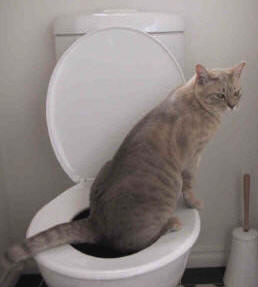We've stumbled upon this post involving How to Dispose of Cat Poop and Litter Without Plastic Bags listed below on the internet and concluded it made sense to relate it with you over here.

Introduction
As pet cat owners, it's vital to be mindful of just how we get rid of our feline friends' waste. While it may appear convenient to flush pet cat poop down the toilet, this method can have destructive consequences for both the atmosphere and human wellness.
Ecological Impact
Flushing cat poop introduces dangerous virus and bloodsuckers right into the water supply, posing a significant danger to water environments. These pollutants can negatively impact aquatic life and concession water quality.
Health Risks
In addition to ecological problems, purging pet cat waste can also posture wellness risks to humans. Cat feces may contain Toxoplasma gondii, a parasite that can create toxoplasmosis-- a possibly severe ailment, especially for pregnant females and individuals with damaged immune systems.
Alternatives to Flushing
Fortunately, there are more secure and more accountable ways to take care of cat poop. Take into consideration the following options:
1. Scoop and Dispose in Trash
One of the most usual method of throwing away pet cat poop is to scoop it into a naturally degradable bag and throw it in the garbage. Make certain to make use of a dedicated litter scoop and deal with the waste quickly.
2. Use Biodegradable Litter
Choose naturally degradable cat litter made from materials such as corn or wheat. These clutters are eco-friendly and can be securely taken care of in the garbage.
3. Bury in the Yard
If you have a yard, consider hiding feline waste in a designated location away from veggie yards and water sources. Make certain to dig deep adequate to avoid contamination of groundwater.
4. Install a Pet Waste Disposal System
Invest in a pet dog waste disposal system specifically made for feline waste. These systems use enzymes to break down the waste, minimizing odor and environmental influence.
Final thought
Accountable pet possession expands past offering food and shelter-- it also involves correct waste administration. By avoiding flushing pet cat poop down the bathroom and opting for alternate disposal approaches, we can minimize our environmental impact and shield human health.
Why Can’t I Flush Cat Poop?
It Spreads a Parasite
Cats are frequently infected with a parasite called toxoplasma gondii. The parasite causes an infection called toxoplasmosis. It is usually harmless to cats. The parasite only uses cat poop as a host for its eggs. Otherwise, the cat’s immune system usually keeps the infection at low enough levels to maintain its own health. But it does not stop the develop of eggs. These eggs are tiny and surprisingly tough. They may survive for a year before they begin to grow. But that’s the problem.
Our wastewater system is not designed to deal with toxoplasmosis eggs. Instead, most eggs will flush from your toilet into sewers and wastewater management plants. After the sewage is treated for many other harmful things in it, it is typically released into local rivers, lakes, or oceans. Here, the toxoplasmosis eggs can find new hosts, including starfish, crabs, otters, and many other wildlife. For many, this is a significant risk to their health. Toxoplasmosis can also end up infecting water sources that are important for agriculture, which means our deer, pigs, and sheep can get infected too.
Is There Risk to Humans?
There can be a risk to human life from flushing cat poop down the toilet. If you do so, the parasites from your cat’s poop can end up in shellfish, game animals, or livestock. If this meat is then served raw or undercooked, the people who eat it can get sick.
In fact, according to the CDC, 40 million people in the United States are infected with toxoplasma gondii. They get it from exposure to infected seafood, or from some kind of cat poop contamination, like drinking from a stream that is contaminated or touching anything that has come into contact with cat poop. That includes just cleaning a cat litter box.
Most people who get infected with these parasites will not develop any symptoms. However, for pregnant women or for those with compromised immune systems, the parasite can cause severe health problems.
How to Handle Cat Poop
The best way to handle cat poop is actually to clean the box more often. The eggs that the parasite sheds will not become active until one to five days after the cat poops. That means that if you clean daily, you’re much less likely to come into direct contact with infectious eggs.
That said, always dispose of cat poop in the garbage and not down the toilet. Wash your hands before and after you clean the litter box, and bring the bag of poop right outside to your garbage bins.
https://trenchlesssolutionsusa.com/why-cant-i-flush-cat-poop/

Do you appreciate reading about Don’t flush cat feces down the toilet? Post a review directly below. We will be interested to see your opinions about this post. In hopes that you come back again soon. Loved our blog entry? Please share it. Help others discover it. Thanks a lot for going through it.
Visit The Following Page